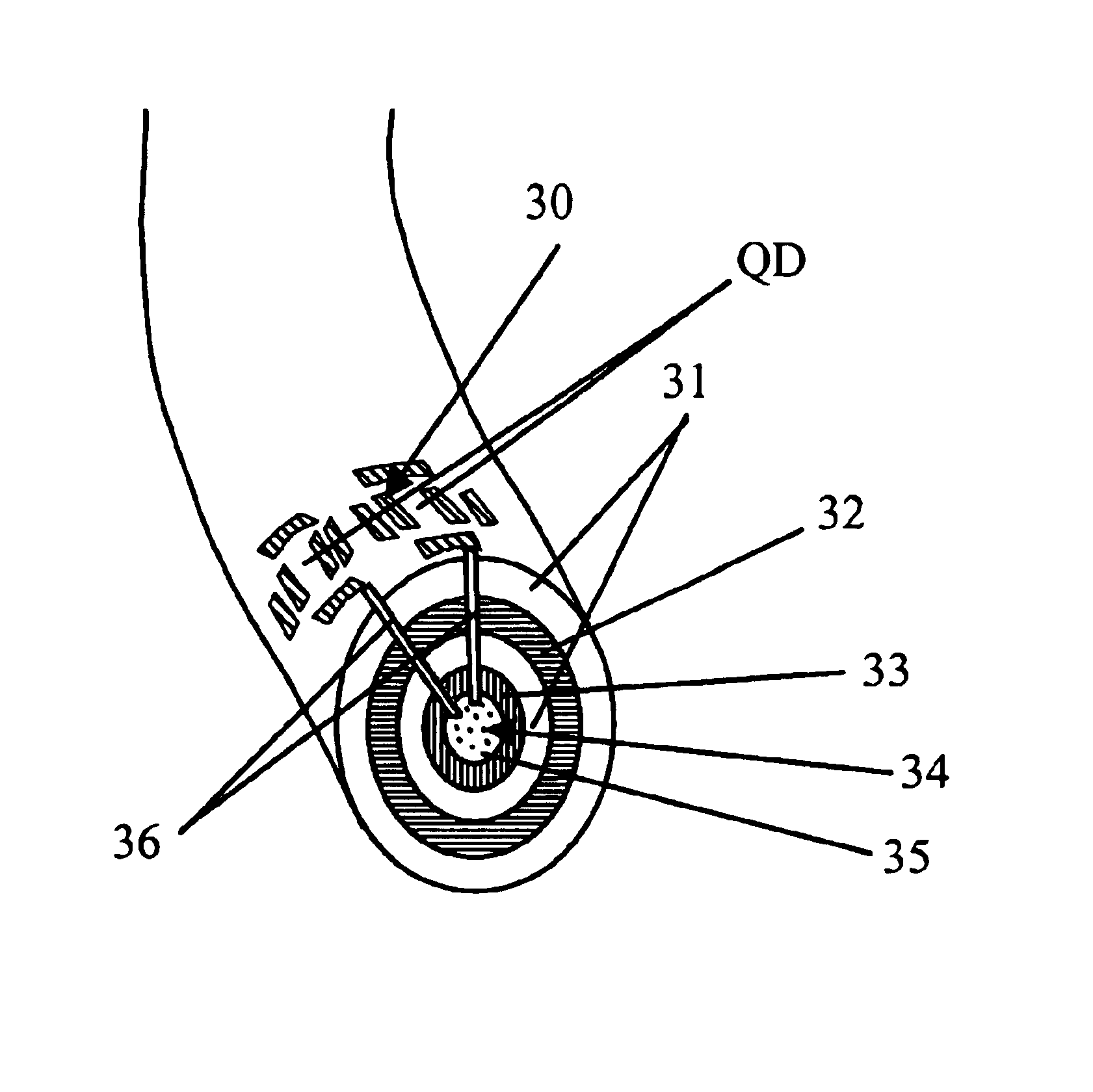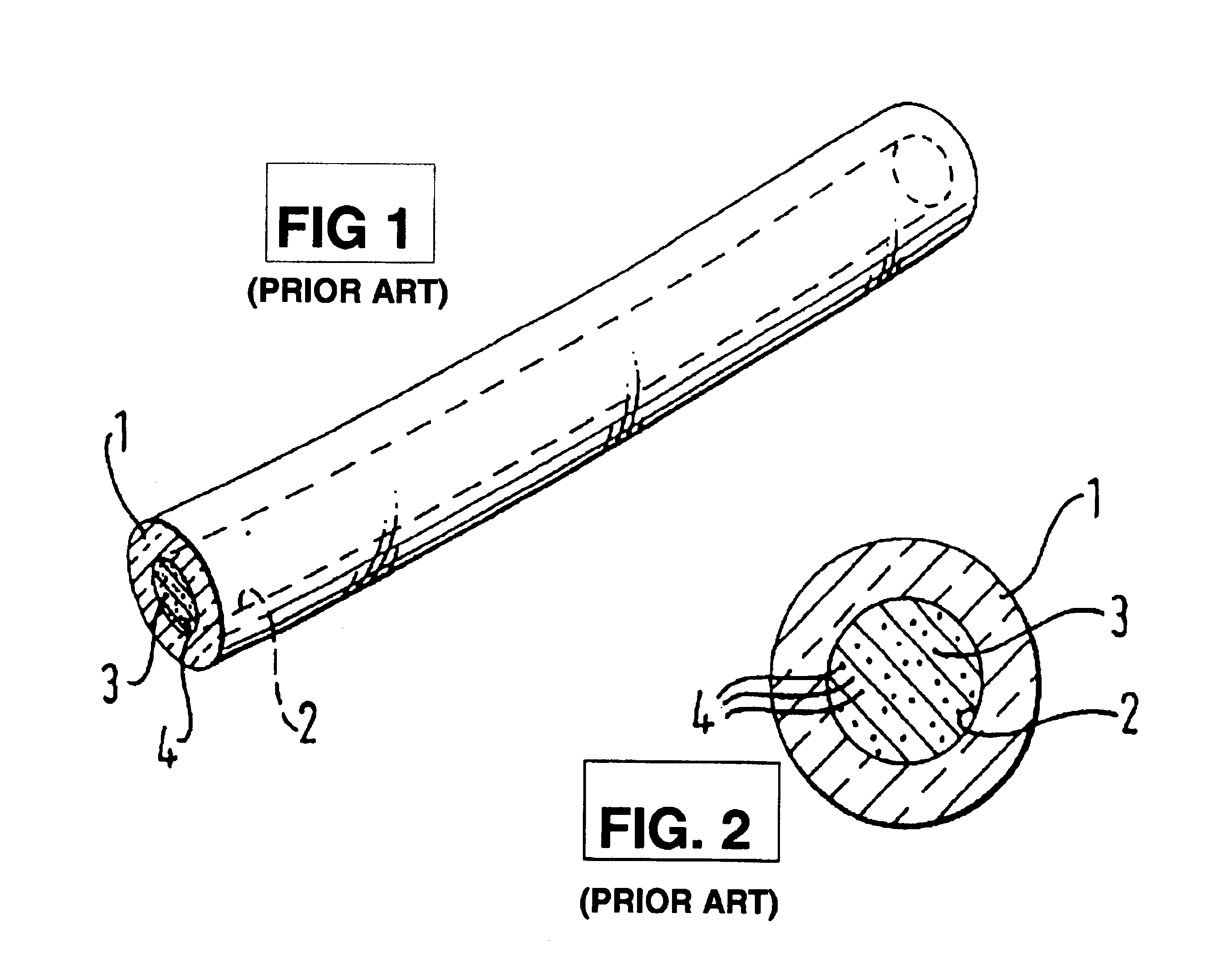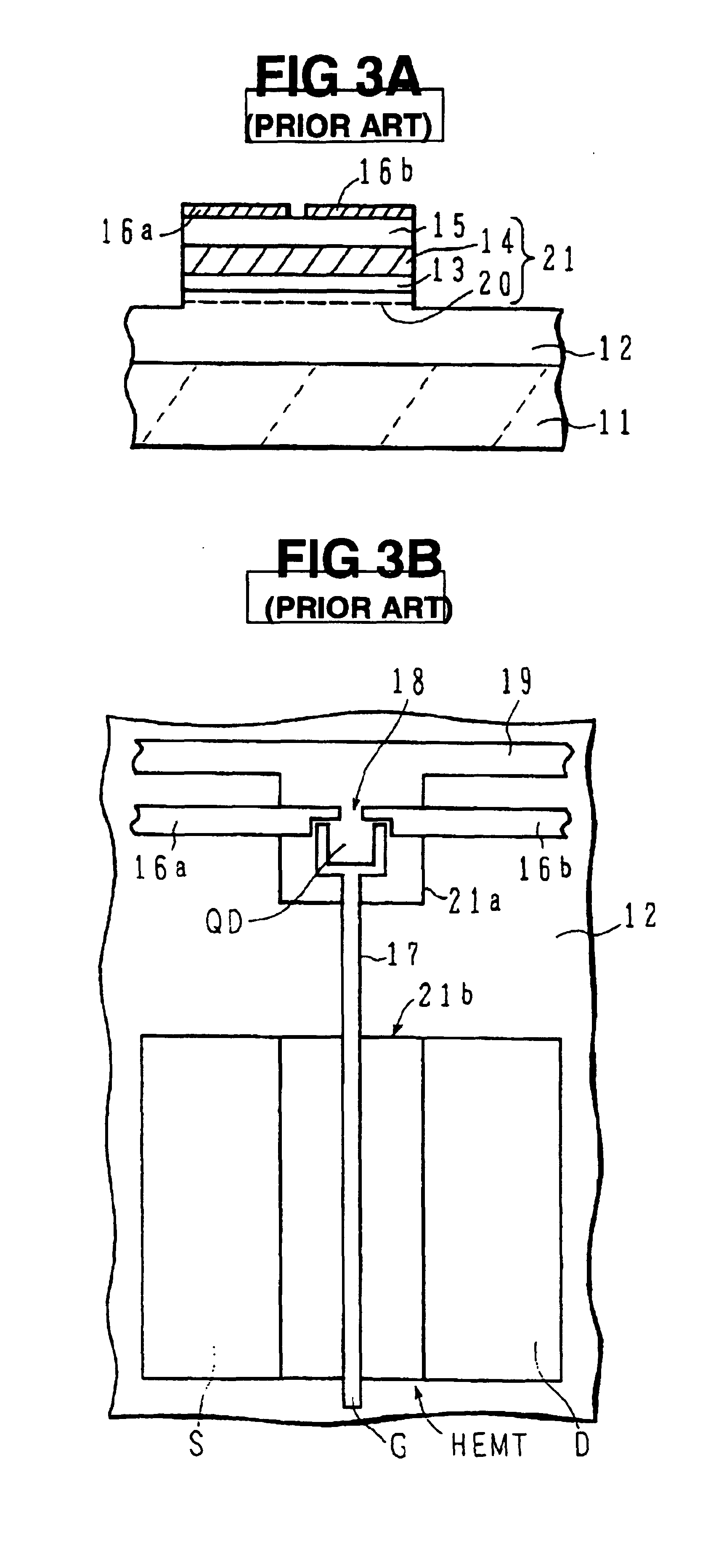Fiber incorporating quantum dots as programmable dopants
a fiber and quantum dots technology, applied in the field of fiber incorporating quantum dots as programmable dopants, can solve the problems of no means or pathways by which these quantum dots particles can be stimulated electrically, the quantum dots have no doping characteristics, and the film is extremely fragil
- Summary
- Abstract
- Description
- Claims
- Application Information
AI Technical Summary
Benefits of technology
Problems solved by technology
Method used
Image
Examples
Embodiment Construction
[0037]FIGS. 4a (isometric view) and 4b (end view) show a preferred embodiment of the invention, which is a fiber containing control wires (34) in an insulating medium (35), surrounded by a quantum well, plus an optional memory layer (33). The preferred composition of the insulator (35) is a semiconductor oxide, although a variety of other materials could be used. The preferred composition of the quantum well is a central or transport layer (32) of a semiconductor (similar to the negative layer of a P-N-P junction), for example, GaAs, surrounded by barrier or supply layers (31) of a semiconductor with higher conduction energy (similar to the positive layers of a P-N-P junction). Because of the difference in conduction energies, electrons “fall” preferentially into the lower energy of the transport layer (32), where they are free to travel horizontally (that is, within the layer) but are confined vertically (perpendicular to the layer) by the higher conduction energy of the barrier la...
PUM
| Property | Measurement | Unit |
|---|---|---|
| carry energy | aaaaa | aaaaa |
| size | aaaaa | aaaaa |
| shape | aaaaa | aaaaa |
Abstract
Description
Claims
Application Information
 Login to View More
Login to View More - R&D
- Intellectual Property
- Life Sciences
- Materials
- Tech Scout
- Unparalleled Data Quality
- Higher Quality Content
- 60% Fewer Hallucinations
Browse by: Latest US Patents, China's latest patents, Technical Efficacy Thesaurus, Application Domain, Technology Topic, Popular Technical Reports.
© 2025 PatSnap. All rights reserved.Legal|Privacy policy|Modern Slavery Act Transparency Statement|Sitemap|About US| Contact US: help@patsnap.com



